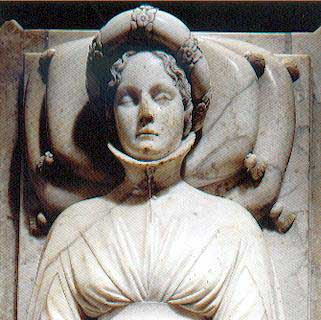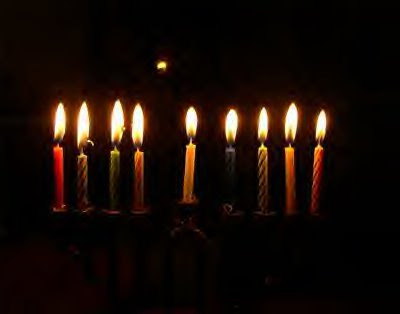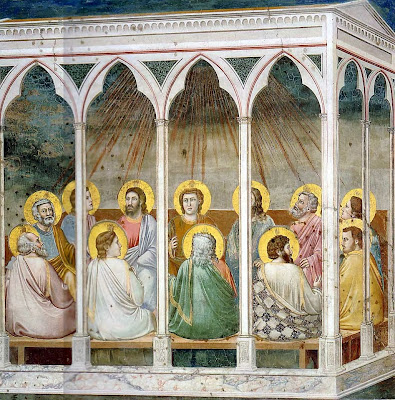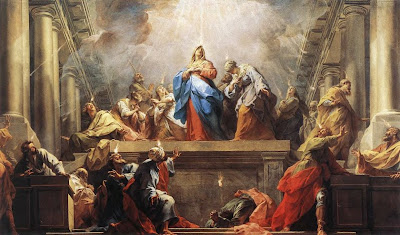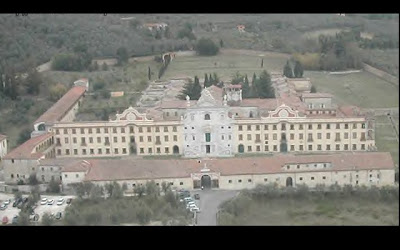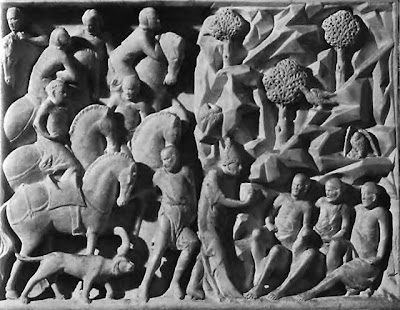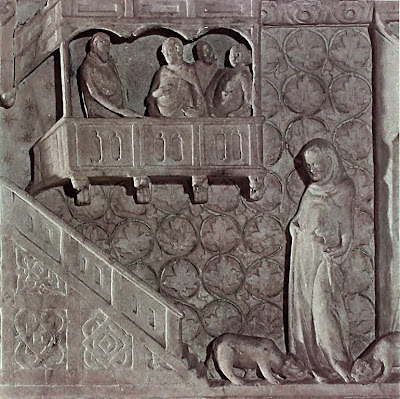During the late 19th century and the first part of the 20th century, several physicians, such as Nobel prize winner Alexis Carrel, supported eugenics, a theory first formulated in 1865 by Francis Galton.
For certain eugenicists, sterilisation was considered a valid part of the "solution" to ending the "menace of the feebleminded" in society. These eugenicists believed that by halting the reproductive capabilities of the "feebleminded" and "defective," their genetic traits would not be passed on to further generations, and over time would therefore be eradicated from society.
Eugenics was discredited as a science after the Nazis' experiments in World War II became known.
However, prior to this, sterilisation of the "feebleminded" (including compulsory sterilisation) became part of the public policy of certain states in the United States, Nazi Germany, some provinces in Canada, Sweden, Australia, and a number of other countries.
It was a very near thing but compulsory sterilisation was only just averted in the United Kingdom.
In
The Great Socialist Shame, the noted Human Rights lawyer
Geoffrey Robertson QC explained:
"[T] he warped biological principles of the English eugenics movement, had the enthusiastic backing of some of the most distinguished intellectuals, writers, doctors and civil servants in the UK. In 1934, for example, a Department of Health report, from a committee chaired by Sir Lawrence Brock, praised Nazi legislation and recommended adoption in the UK of compulsory sterilisation of the "feeble-minded", a class comprising "a quarter of a million mental defectives and a far larger number of the mentally subnormal".
The US Supreme Court, in 1927, had already upheld eugenics-based forcible sterilisation of "degenerates" (ie, of the poor, and especially of poor blacks). The liberal jurist Oliver Wendell Holmes dismissed the court challenge with the comment that "three generations of imbeciles are enough". In the same year, after lobbying from the Eugenics Society, the British government had updated the UK's Mental Deficiency Act, which provided for the detention of the "feeble-minded", including "moral imbeciles" such as single mothers on benefits.
Most shocking of all was the extent of support for eugenics from British socialists and literary giants. George Bernard Shaw argued for humane extermination of "the sort of people who do not fit in". Aldous Huxley wanted to "prevent the sub-normal from having any families at all". Marie Stopes publicly pleaded for the sterilisation of "the hopelessly rotten and racially diseased". Both Virginia Woolf and D H Lawrence privately urged that the state should exterminate "imbeciles".
Oxford's Professor Desmond King has, in a recent book, concluded that their "desire to improve the lower orders was invariably well-intentioned". This is over-kind: these arrogant intellectuals were perfectly capable of imagining the inhumanity that their policies entailed. Their main objective - compulsory sterilisation of the unfit - did not happen in Britain because of opposition from the Catholics (thank God, in this respect, for G K Chesterton) and from Labour MPs (who rightly feared that the working class would be the real victims of the Fabian intelligentsia). "
In the face of the prevailing orthodoxy, the Catholic Church always opposed sterilisation especially eugenic sterilisation. The same was not true of some other Christian denominations.
The author G.K. Chesterton (before he converted to Catholicism in 1922) led the opposition outside the UK Parliament to the Mental Deficiency Bill of 1912, which had been introduced by Winston Churchill, the Home Secretary in the Liberal Administration. As a result of his campaign and those inside Parliament such as Wedgwood, Outhwaite, and Banbury, the Bill was defeated. A new Bill was reintroduced in 1913 but this omitted the most objectionable parts of the original Bill.
In 1930, Pope Pius XI put the Catholic position beyond all doubt in his Encyclical,
Castii Connubii (On Marriage). Nowadays the Encyclical seems to be mainly known for its position on artificial contraception and being the forerunner of
Humanae Vitae.
Its importance and its courage in contradicting the prevailing orthodoxy of favouring compulsory eugenic-based sterilisation programmes now seems to be forgotten or overlooked. Events would prove him right. Unfortunately, the events were in Nazi Germany.
He said:
"68. Finally, that pernicious practice must be condemned which closely touches upon the natural right of man to enter matrimony but affects also in a real way the welfare of the offspring. For there are some who over solicitous for the cause of eugenics, not only give salutary counsel for more certainly procuring the strength and health of the future child - which, indeed, is not contrary to right reason - but put eugenics before aims of a higher order, and by public authority wish to prevent from marrying all those whom, even though naturally fit for marriage, they consider, according to the norms and conjectures of their investigations, would, through hereditary transmission, bring forth defective offspring. And more, they wish to legislate to deprive these of that natural faculty by medical action despite their unwillingness; and this they do not propose as an infliction of grave punishment under the authority of the state for a crime committed, not to prevent future crimes by guilty persons, but against every right and good they wish the civil authority to arrogate to itself a power over a faculty which it never had and can never legitimately possess.
69. Those who act in this way are at fault in losing sight of the fact that the family is more sacred than the State and that men are begotten not for the earth and for time, but for Heaven and eternity. Although often these individuals are to be dissuaded from entering into matrimony, certainly it is wrong to brand men with the stigma of crime because they contract marriage, on the ground that, despite the fact that they are in every respect capable of matrimony, they will give birth only to defective children, even though they use all care and diligence.
70. Public magistrates have no direct power over the bodies of their subjects; therefore, where no crime has taken place and there is no cause present for grave punishment, they can never directly harm, or tamper with the integrity of the body, either for the reasons of eugenics or for any other reason. St. Thomas teaches this when inquiring whether human judges for the sake of preventing future evils can inflict punishment, he admits that the power indeed exists as regards certain other forms of evil, but justly and properly denies it as regards the maiming of the body. "No one who is guiltless may be punished by a human tribunal either by flogging to death, or mutilation, or by beating."
71. Furthermore, Christian doctrine establishes, and the light of human reason makes it most clear, that private individuals have no other power over the members of their bodies than that which pertains to their natural ends; and they are not free to destroy or mutilate their members, or in any other way render themselves unfit for their natural functions, except when no other provision can be made for the good of the whole body. "
Time`s edition of Jan. 19, 1931 reported extensively on the wide adverse reaction to the Encyclical.(It only quoted those against.) In particular, it noted one which it described as a compelling rebuttal:
"But one of the most compelling rebuttals was not a direct one. It came from Professor Julian Sorell Huxley. Brother of Novelist Aldous Leonard (Point Counterpoint) Huxley, and grandson of the late great Biologist Thomas Henry Huxley, Julian Huxley is himself a most distinguished biologist and eloquent member of the scientific vanguard. Speaking to the Philadelphia Forum, he said: "In the long run we must envisage the control of population in the same manner we now control contagious disease. Birth control is by no means perfect, but it is one of the major events in the world's history! . . . In one or two centuries ... we shall tell the man who can't provide for himself and his family that he cannot have State aid unless he agrees not to have any more children. If he refuses, State aid shall also be refused him or else he shall be locked up. ... In our society a man with a small family finds that he gets ahead quicker and that his smaller number of children can have greater advantages. All of this may seem very undemocratic, but heredity and biology are very undemocratic."
After the Nazi experiences in Germany discredited such practices, Pope Pius XII re-iterated the position in his
Allocution to midwives, October 29, 1951. He said:
"It would be more than a mere lack of readiness in the service of life if an attack made by man were to concern not only a single act but should affect the organism itself to deprive it, by means of sterilisation, of the faculty of procreating a new life. Here, too, you have a clear rule in the Church's teaching to guide your behaviour both interiorly and exteriorly. Direct sterilisation— that is, whose aim tends as a means or as an end at making procreation impossible—is a grave violation of the moral law and therefore unlawful. Not even public authority has any right, under the pretext of any "indication" whatsoever, to permit it, and less still to prescribe it or to have it used to the detriment of innocent human beings.
This principle is already proclaimed in the above mentioned Encyclical of Pius XI on marriage. Thus when ten years or so ago sterilisation came to be more widely applied, the Holy See saw the necessity of expressly and publicly declaring that direct sterilisation, either perpetual or temporary, in either the male or the female, is unlawful according to natural law, from which, as you well know, not even the Church has the power to dispense.
As far as you can, oppose, in your apostolate, these perverse tendencies and do not give them your cooperation."
FURTHER REFERENCES:
1.
The experience in the United States
Eugenic Sterilization Laws by Paul Lombardo, University of Virginia
http://www.eugenicsarchive.org/html/eugenics/essay8text.html
The Eugenics Archive
http://www.eugenicsarchive.org/eugenics/
"Three Generations, No Imbeciles: Virginia, Eugenics, and Buck v. Bell"
http://www.healthsystem.virginia.edu/internet/library/historical/eugenics/index.cfm
Eugenics in America : Sterilization
http://www.facinghistorycampus.org/campus/rm.nsf/0/378157EF2F49B448852570360070E6F5
The Betrayal at the Root of the Culture Wars By Anne Barbeau Gardiner (
New Oxford Review)
http://www.newoxfordreview.org/reviews.jsp?did=1006-gardiner
Eugenic Sterilization and a Qualified Nazi Analogy:
The United States and Germany, 1930–1945
Andre´ N. Sofair, MD, MPH, and Lauris C. Kaldjian, MD
Ann Intern Med.: American College of Physicians–American Society of Internal Medicine (2000) (.pdf file)
http://www.annals.org/cgi/reprint/132/4/312.pdf
Eugenic Sterilization and a Nazi Analogy
Jay A. Nathanson, MD, and Michael A. Grodin, MD
Ann Intern Med.: (June 2000)
http://www.annals.org/cgi/content/full/132/12/1008
Catholic participation in the American Eugenics Society in the 1920s by Sharon Leon (.pdf file)
Journal of the History of Medicine and Allied Sciences Volume 59, Number 1, pages 3 -49 (2004)
http://jhmas.oxfordjournals.org/cgi/reprint/59/1/3.pdf
2.
The experience in the United Kingdom
The Enemy of Eugenics by Russell Sparkes
http://www.secondspring.co.uk/articles/sparkes.htm
Eugenics and Politics in Britain, 1900-1914 by G. R. Searle
http://216.239.59.104/search?q=cache:mDCDnUh4u70J:www.arno.daastol.com/books/searle.rtf+mental+deficiency+act+1913+%
2Bchesterton&hl=en&ct=clnk&cd=16&ie=UTF-8
3.
General History
SHAPING GENES:
Ethics, Law and Science of Using New Genetic Technology in Medicine and Agriculture
12. Selective Human Breeding (pp. 214-235 )
http://www.csu.edu.au/learning/eubios/SG12.html Jean Fouquet. (c. 1415/20 - c.1480)
Jean Fouquet. (c. 1415/20 - c.1480)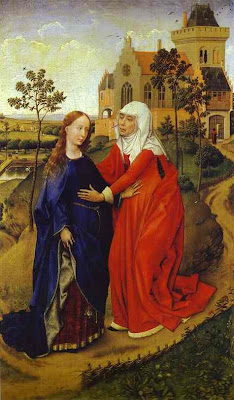 Rogier van der Weyden.(1399/1400 - 1464)
Rogier van der Weyden.(1399/1400 - 1464)



%2520.jpg)
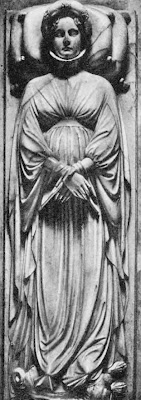
.jpg)
